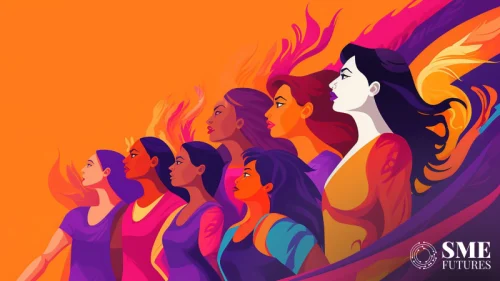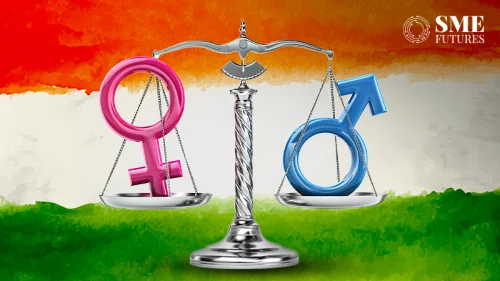In a nation where over 63 million MSMEs contribute a significant 30 per cent to the GDP, the future of India’s economy is intricately linked to the success of these small businesses. Yet, these enterprises face challenges while accessing fair and affordable credit. Bhavik Vasa, Founder of GetVantage, sees fintech as the key to overcoming these barriers, driving innovation, and unlocking the true potential of MSMEs. In this exclusive interview, Vasa discusses the critical role of embedded finance, AI, and strategic partnerships in transforming the financial landscape for MSMEs in India, paving the way for their growth in a rapidly evolving digital economy.
In today’s rapidly evolving digital economy, what do you see as the most significant opportunities and challenges for MSMEs in India, and how can fintech innovations address these?
MSMEs in India are standing at a pivotal crossroads. Today, over 30% of India’s GDP is driven by MSMEs. With a vision to grow from a $3 trillion to a $5 trillion economy in the next decade, the growing contribution from this sector will be of critical importance. However, the lack of fair, affordable, and accessible credit continues to stifle the true economic potential of this vital sector. Historically, access to formal credit for MSMEs has been a significant challenge and continues to be so. Traditional financial institutions were never designed to cater to this vast ecosystem due to various limitations including reach, risk appetite, and underwriting methods that have not evolved with time and technology. Today, this growing challenge also represents an unprecedented INR 50,000 crores/ US$ 570 billion credit opportunity by 2027 according to our proprietary research in collaboration with Redseer.
The advent of new technologies including mobile connectivity, the rise of e-commerce, adoption of digital payments, and the stickiness of digital ecosystems means that tech-first financial solutions will be a game changer in addressing the fast-evolving needs of MSMEs in emerging markets like India. This will be driven by fintech. Particularly, innovative cash flow-based financing and embedded finance solutions are increasingly popular tools, making significant headway in helping bridge the critical credit requirement to help MSMEs unlock their revenue potential.
How do you envision embedded finance transforming the accessibility of credit for MSMEs, particularly for new businesses and digital-first companies?
Embedded finance globally and now in India is poised to transform how MSMEs access credit. Traditional banking models often fall short in catering to these businesses, primarily due to their lack of substantial vintage, inadequate credit profile, or collateral. Today, small businesses rely on various software solutions and platforms to help them grow their businesses.
The ability of fintechs like GetVantage to tap into these alternate data sources is critical. This allows us to evaluate the business on a mix of traditional and alternate data points using AI and ML to build a more holistic credit profile. By triangulating data from a business’s financials, sales, and GST accounts in real-time and augmented with traditional data sets, we can better understand past performance, current health and more accurately predict future growth. This is something that traditional financial institutions were never designed to do and as a result, severely limits their abilities to cater to emerging and digital-first businesses.
What role will AI and machine learning play in enhancing the effectiveness of providing better financial access for small businesses?
AI and ML are critical in the evolution of embedded finance and innovative cash flow-based financing, particularly in three aspects.
- Underwriting – Using these tools brings unprecedented efficiency in underwriting – making the process significantly quicker.
- Build a more holistic credit profile – These tools can more accurately analyse traditional and non-traditional data sets to create a truer credit profile of a business.
- Personalisation – These tools allow us to create more personalised and efficient financial products for small businesses based on numerous criteria ranging from vintage to sector.
At GetVantage, various modules in our proprietary stack use AI & ML for these aspects. This has enabled us to provide a frictionless and more efficient, user-friendly experience, cutting down application to disbursal times from weeks and months to as fast as 48 hours. As the premier embedded finance partner for various ecosystems, we’re able to use these technologies to analyse a business’ platform data and push pre-approved offers proactively, even before a merchant comes looking for funding. This has proven to be incredibly useful for certain sectors of businesses that are seasonal, especially during the festive season.
How do you see private sector initiatives complementing the Indian Govt’s efforts for digital empowerment?
Public-private partnerships and close collaboration are vital to realizing the Hon’ble Prime Minister’s vision for a Viksit Bharat. It’s incredible to see the forward-thinking approach to innovation taken by the Indian Government to foster greater security for all participants. The RBI, for example, has proposed a regulatory sandbox for fintechs to operate and experiment with new business models and solutions in certain categories. More recently, they have released draft norms on fintech SROs (Self-Regulatory Organization). This is an incredible opportunity for greater private and public sector collaboration in a progressive manner to optimize economic outcomes.
Upcoming initiatives like OCEN (Open Credit Enablement Network) which add to the India Stack, are set to be particularly transformative. This is a massive step towards bridging the growing credit gap and levelling the playing field for MSMEs.
What trends do you think will shape the future of small business financing in India, and how should MSMEs prepare to navigate these changes?
The future of small business financing in India will be heavily influenced by the rise of embedded finance, where financial services are seamlessly integrated into the everyday platforms that MSMEs already use. This trend will make accessing credit more intuitive and efficient, allowing MSMEs to focus on growth rather than navigating complex financial processes. Also, OCEN is set to democratize working capital access for MSMEs while ONDC aims to empower businesses with more accessible digital commerce opportunities. To prepare for these changes, MSMEs should embrace digital platforms that offer embedded finance solutions. By beginning to better familiarize themselves with digital services, they can expand their digital footprint, vital to leveraging these solutions.
What initiatives is GetVantage undertaking to support women entrepreneurs and address funding gaps in the market?
The Indian Government’s initiatives like Udyam Sakhi, Mahila Coir Yojana, and MUDRA to empower women entrepreneurs are truly transformative. At GetVantage, we fully support these efforts, which is why we launched the INR 100 crore Rise-Up fund—India’s first non-dilutive fund dedicated to women entrepreneurs, aiming to help over 400 women-led businesses scale their operations.
A recent study by UGRO Capital highlights that women-owned businesses account for approximately 20.5% of India’s 63 million MSMEs. Despite their significant potential, these businesses face a financing gap estimated at $158 billion. The report also notes that a substantial portion of credit for women entrepreneurs is often sourced through informal means like moneylenders, underscoring the need for more structured financial support.
By dedicating resources to the Rise-Up Fund, GetVantage aims to bridge this critical funding gap, enabling women-led businesses to overcome financial barriers. Our focus is on providing accessible and transparent financing solutions that align with the unique needs of female founders, ultimately contributing to the creation of more women-owned enterprises across India.
How do you see the role of partnerships between fintech companies and traditional financial institutions evolving in the coming years?
Partnerships between fintech companies and traditional financial institutions will be instrumental in shaping the future of financial services. As embedded finance becomes increasingly prevalent, the collaboration between fintechs and banks will be vital in integrating financial services directly into the platforms that businesses and consumers use every day.
We’ve partnered with various marketplaces, PSPs, and banks like Kotak, IDFC, DBS, and HSBC to offer complementary services that make financial products more accessible. Fintechs bring agility, innovation, and technology-driven solutions, while traditional banks offer scale, trust, and regulatory expertise. By working together, we can leverage each other’s strengths, providing a seamless experience for customers and enabling banks to reach a broader audience, including underserved MSMEs. This collaboration doesn’t just enhance access to financial products; it drives the next wave of innovation in the financial sector, creating a more inclusive financial ecosystem for businesses to grow.










